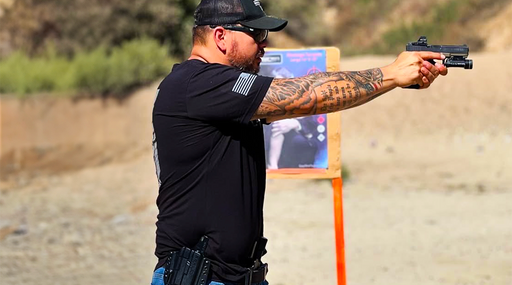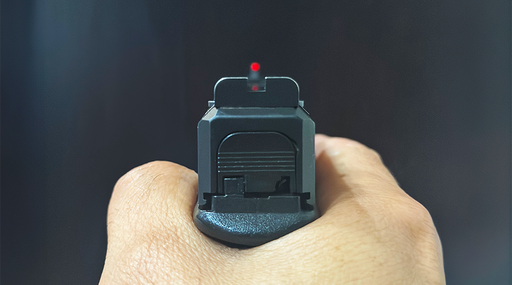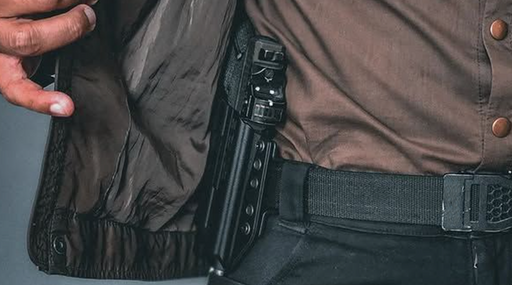
Not a month goes by that I don’t hear a concealed carry prospect, or new licensee, say they bought a gun because it has a safety. It’s a comment that makes me uneasy, mostly for their literal safety. Here’s why.
Should your concealment gun have a safety? My short answer is no, assuming you’re going to carry the gun in a holster that adequately covers the trigger guard and keeps the gun from falling out, and (most critically) that you are capable of maintaining awareness of where your fingers are at all times and can keep them clear of the trigger and trigger guard.


Why would I not want a manual safety? The short answer is “speed.” The average violent criminal encounter takes less than five seconds. How fast can you disengage that safety when under severe stress? Time and again, as an observer of hundreds of students under timed exercises, people are seen pressing the trigger, intending to shoot, but the time monkey on their back has made them forget about operating that little lever. I have experienced the same when shooting competitively with a 1911 platform—even though it was just once in a match, that humbling moment is a stark reminder of how a simple lever might interfere with an act of self-defense.
Time spent moving a safety to the “FIRE” position is especially worth considering if the gun has a difficult-to-disengage safety that requires the support hand to do something with that little button. In an incident such as armed robbery, chances are you’ll never have the luxury of having that other hand free to fiddle with a safety.
The second reason I shun safeties on my own striker-fired guns is to prevent myself from becoming sloppy with finger discipline, based on the assumption that a mechanical device is going to protect me from my own incompetence. There is no excuse for sloppy, unsafe gun handling. Mechanical devices fail with regularity. I don’t want to assume that litter lever will save me from unsafe gun handling.
Mechanical failure can take many forms, two of which most people fail to consider. The most common is simple lack of correct operation. Grip safeties are notorious for this, especially for people with less-than-meaty hands or a less-than-perfect grip. I have seen the grip safety of the M&P Shield E-Z, marketed to women and elderly people, unintentionally engage (be in the “safe” position) more times and with more shooters than I can count. My own Springfield XD, with its backstrap-located grip safety, disengages often enough in my hollow palms that I keep it banded.

Another way a safety can fail to perform as expected is especially a risk for left-handed people or anyone carrying a gun with an ambidextrous safety. This is true for both typical concealment guns and 1911s with an ambi safety. Even when the safety lever is stiff to operate, there’s a fair chance of it being moved to the “FIRE” position while still holstered and without the wearer’s knowledge. External objects like seatbelts, grocery bags borne at hip height, and so on can cause a safety to disengage. When this happens, if the person was carrying a gun with a safety because they haven’t developed their own finger-off-trigger habit yet, disaster can ensue.
All that being said, there is a strong association between the very word “safety,” the mechanical device, and psychological comfort for many new shooters. At the end of the day, if having a safety on the gun means you’ll carry it rather than leave it in the car or at home, I hope you choose a gun with a safety. But please plan on putting in the time handling your gun properly, which for this discussion means the gun doesn’t feel right in your hand if your trigger finger isn’t resting on the slide and your pinky, ring, and middle finger are wrapped securely around the grip. This method of holding the gun must become second nature—handle it often and well to develop this habit! And of course, care must be taken with re-holstering the gun, regardless of how you carry, even open. Always keep the trigger guard clear of obstruction.
If you’re following my line of thought but still not 100% sure your safety skills and comfort level are sufficient to carry safety without a mechanical safety, there are a couple options. Consider wearing the gun concealed but unloaded for a while. Or consider wearing it with a loaded magazine and cold chamber until you’re confident about your finger discipline—understanding that your chances of success in using deadly force with that gun are small thanks to it being unloaded and the previously mentioned effects of time, stress, and needing two hands. Finally, unless you’re carrying a 1911 style gun (I would include in the 1011 category the tiny single action guns like Springfield 1911 and Sig Sauer P938, which lack the additional grip safety of a 1911), there’s no rule that says you have to keep the safety on. Most striker-fired and double-action only firearms can reasonably be carried without the safety “on,” again assuming your safety and holstering skills are in place.

Remember this: “safety” should refer to gun handling behavior and not a mechanical device when it comes to confidence in carrying a gun.
I hope this discussion about safeties has answered any questions you’ve had in mind about a mechanical safety on your gun. What is presented here is my earned opinion as a daily carrier and instructor. You know what they say about opinions! Respectful discussion and honest questions are welcome.





















Leave a comment
1 comment
Excellent article. I’ve been carrying concealed for 15 years. My approach was a) lots of tactical training regularly; b) monthly IDPA matches to enhance skills; c) began carrying every day with the chamber cold; d) daily carry hot. No safety, holster made specifically for the gun. Even after 15 years, I still find an annual advanced class somewhere, and train weekly. Cheers.